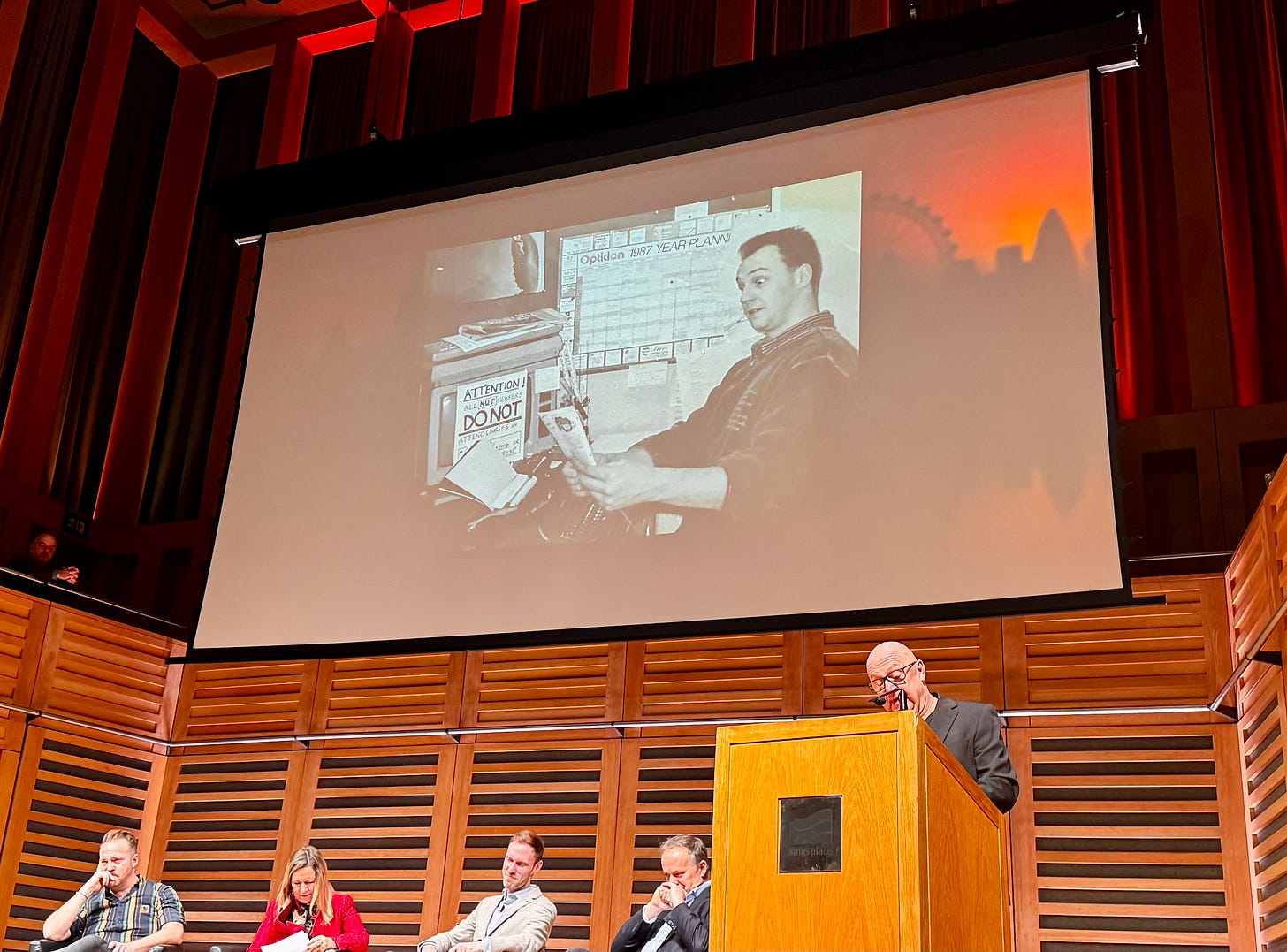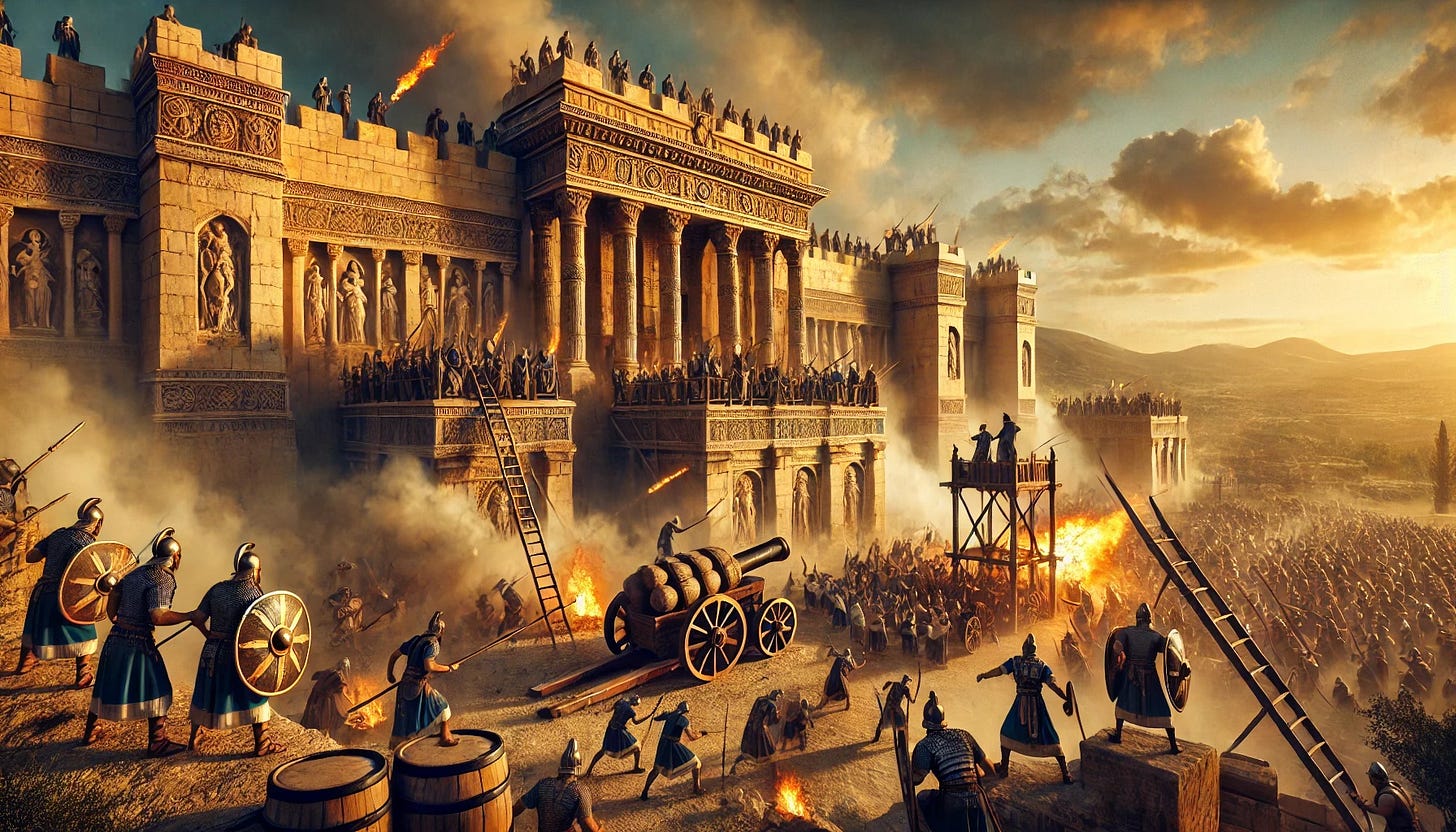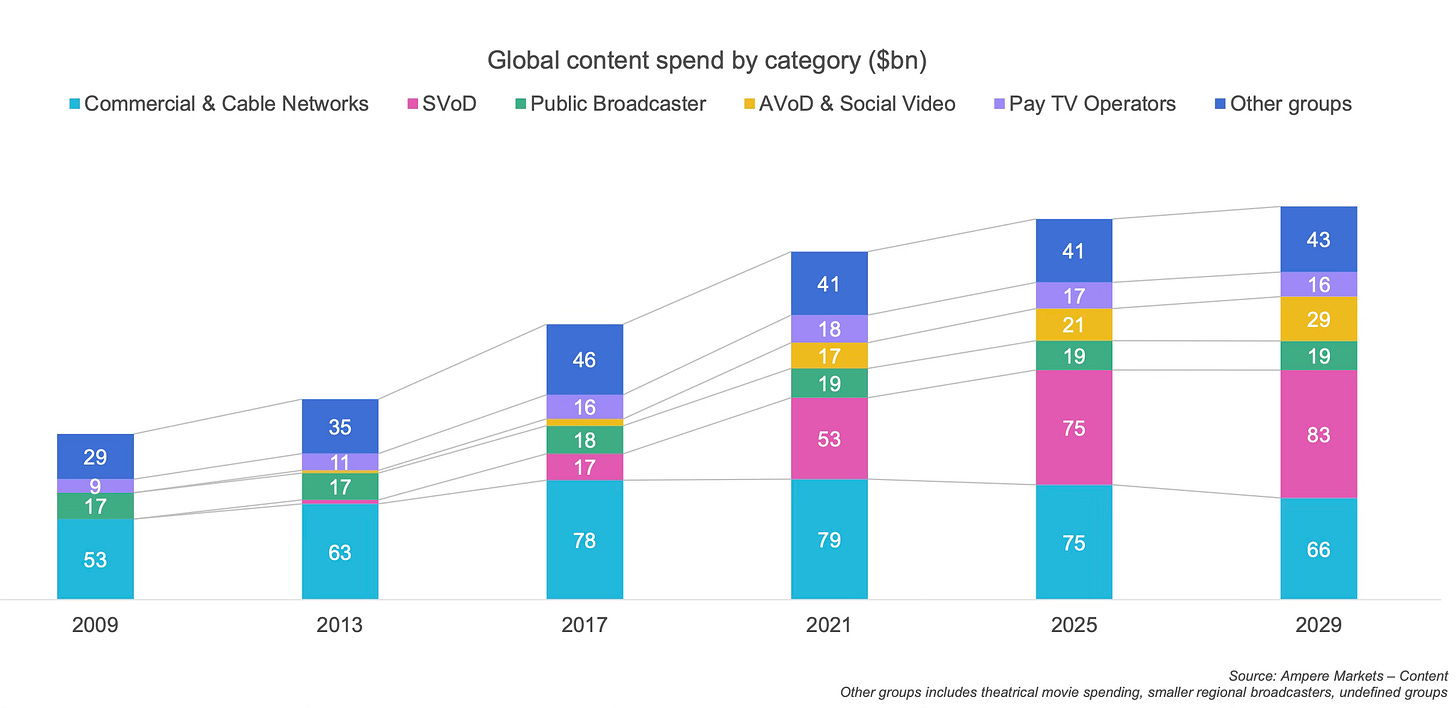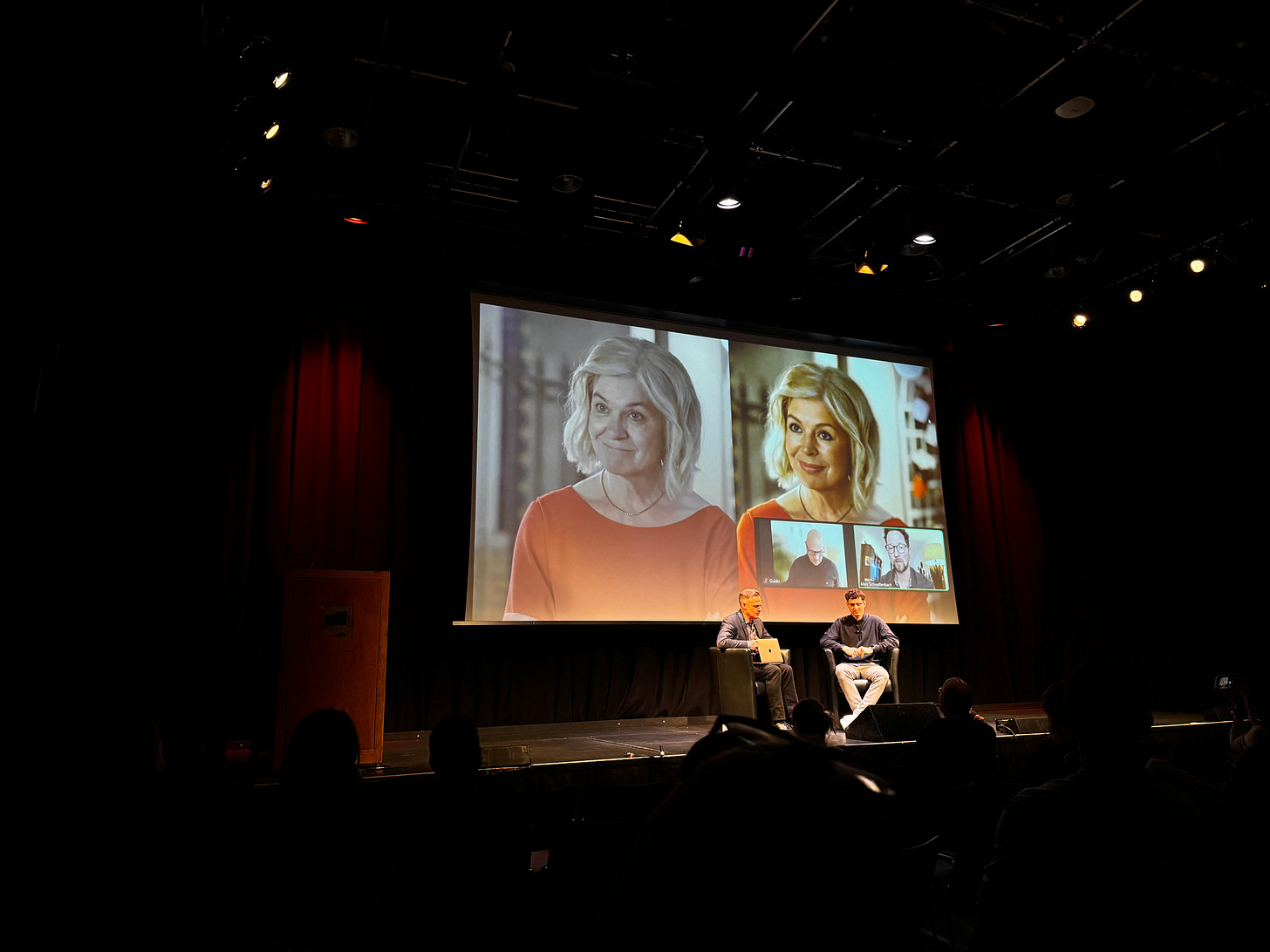Content London 2024: AI, audiences and embracing change
The key themes for the TV, film and content creator market.
This week was Content London 2024, and there was a great breadth of sessions with people from not just the UK but all over the world. I hadn’t been to Content London in quite a few years, and so it was impressive to see how much it has grown and matured, which is a real tribute to David Jenkinson and the C21 team. Indeed, the first time I attended, I was on a panel on stage when they did a draw for someone to win a new fangled device called an iPad. Which I won, and it looked like a complete stitch up…
I’ve written this post in between sessions and so it is a bit more spontaneous (rushed?) than usual. If I had one key takeaway, it is that we are at an inflection point that heralds a new era of exponential transformational change. The future is here and now. It comes with great opportunities as well as significant challenges, and to survive requires being a participant not an observer.
—
A quick promo! FOCUS Film City Futures have a free online session next week led by Clare Thompson of K7 Media, called ‘The TV Landscape 2024-25: Broken Models, Big Opportunities’.
It is on Thursday December 12th, 1 - 2pm, and you can register here: Eventbrite Link.
—
So without further ado, here are my immediate thoughts on what stood out as the key themes for 2025 and beyond for those across the TV, film and creative content sectors. In my view, they fit together to create a compelling argument for opportunity, action and urgency.
1. The gap between production costs and funding isn’t going away
A regular theme was the increasing cost of production meeting the downward pressure on budgets – what one panel called a ‘perfect storm’ of cost inflation meeting price deflation.
Obviously the situation is different depending on genre, territory, talent, concept and company, however overall the squeeze on budgets and the challenging headwinds for commissioners, financiers and distributors to be able to make investment cases that show a return is very real. And most panels and sessions seemed to share a view that this wasn’t going to disappear any time soon; pressures may lessen, content volumes will go back up, however not to the peak previously seen and so there isn’t going to be correction back to the days of old. This is because of the fragmentation of audiences, channels, distribution points and therefore revenues means it is hard to stack up the money and make a return in the usual way.
Indeed, Ampere Analysis shared this slide that showed a prediction of global content spent by platform now and in 2029:
What this predicts is a flat line for PSBs, growth for streamers, with significant drop off for cable and commercial operators. Against a backdrop of production costs not going down, then this creates a financing gap for certain genres that can’t be wished away.
2. Enthusiasm around AI
The AI presentations and panels were largely enthusiastic, optimistic and hungry. Yes, there were questions – often not answered – about ownership, ethics and jobs. For example, Simon Mirren (show runner of Criminal Minds) said that 2025 would see the greatest IP theft in human history. However the message that was repeatedly made is that we are now in an adapt or die moment, and that those that move first, are likely to not just survive but lead the future revolution.
Chad Nelson of OpenAI gave a fairly mind-blowing demonstration of the latest version of the Sora video tool that is yet to be released. While he didn’t confirm a date, the vibe certainly felt the release is imminent – perhaps in the next few months or so – rather than years. You can see the Sora demo released in February here, and there have been significant advances since then.

At the point Sora is released, then the bloody doors are going to be blown off across the creative industries, not just TV, film and content but all sectors and roles that use visualisations, video, graphics and storytelling.
How Sora (and other) AI tools will transform the market is hard to fathom or predict. Chad Nelson said at the moment he imagines it being used in pre-production and ideas development (so not in the finished TV and film product). However it is not hard to see, that as the tools and output quality develops over the coming months and years, that this will change too. As well as productivity efficiencies, AI tools are likely to impact a broad range of content creation activities: VFX, animation, costumes, makeup, physical studios, set design, green screen production for scripted all the way through to drama recon, drone footage and graphics in factual.
If the gap in programme finance mentioned above isn’t going to be filled by cash, then production costs need to come down – and these tools perhaps offer a significant cost reduction, which may result in shows getting made that otherwise wouldn’t, however this will also have a human impact that the industry has not yet begun to grapple with. In addition, there are the ethical, ownership and audience transparency issues that flow from this type of content creation.
Crucially, the release of these AI tools for anyone to use will also bring a whole host of new competitors for audience’s attention - more on that in a moment.
—
A quick reminder: Jason Mitchell from The Connected Set is running a series of three free LinkedIn online seminars next week, all designed to get producers to understand the breadth of AI tools out there - sign up here.
—
There were some interesting case studies. Director Rajeev Dassani and Benjamin Anderson from Case Closed Entertainment showed how they used AI tools on ‘Apex’, their low budget procedural (and when they said low budget, it was $1k an ep!). All of the previsualisations for set and costume designers were created in AI, which didn’t look significantly different from what was shot in the end. They also used tools for translation and lip syncing.
Terra Mater Studios showed their Hera companion project, where their AI chat tool responds to questions and presents live (or recent?) data from the Hera satellite that is researching how to ward off an asteroid hitting the earth.
The Fremantle owned German production company UFA showed how they used AI to bring a much loved daily soap character back from the dead. Seemingly, the actress Christiane Maybach had written in her last will for the producers to make her unforgettable. This was a really detailed presentation showing how they practically used the tools to develop a believable version of the character to feature in a dream-sequence storyline.
Finally, David Jenkinson opened the conference with this wonderful photo of him, and recounted how when he was a young print journalist he went out and bought for himself a computer to improve his productivity. In contrast, the NUJ instead went on strike to protest the introduction of computers into the workplace.

As creative people, producers are well placed to embrace these tools, perhaps regularly asking the following questions:
Do they help us be more efficient
Can we deploy this now or does it need more testing
How does the tool we are using earn money
Who owns what is created when using these tools (and if the answer is the tech company who made the tool, be very wary).
3. Brands
There was a lot of talk about brands and new forms of money, with some great case studies from Banijay, E.On and Vinted to name but three. There also was ‘Dare to Defy’, a three part series on Amazon Prime in partnership with Nissan.
However, when looking at many of the branded partnership examples, they were often for short form or social content series. Therefore for larger production companies, or those with ‘big’ ideas that need northwards of $300k per ep to be deliverable, then there still does seem there is a gap to be bridged between what a brand is willing to find and quality producers finding a way to access the right brands.
4. Creators
Comments about creators and the creator economy were woven throughout many of the sessions, coming up in one way or another even when not strictly obvious.
It is notable how over the last years what used to be called ‘influencers’ are now called ‘creators’. Previously, influencers were often seen as a parallel and separate entity, something that ‘young people’ engaged with, and their relevance to TV might be as celebrities on Strictly. However, creators are now increasingly seen as impressive creative entities and businesses in their own right, and are viewed by the TV industry more as equals, collaborators and yes, competitors for the attention of audiences as well as brands. Indeed, several panels in different ways suggested that the TV and creators are merging anyway, and it is all one big market where everyone is trying to grab and keep attention.
The message for producers was clear: the pressure on TV content budgets comes from fragmentation within the market, but also and really crucially, huge pressure comes from outside the TV sector. Yes, games, yes, social, but these are corporations and businesses that have been around a while, so in a way, are familiar. Rather it is the enormous, disintermediated and nebulous creator economy that is chomping away at the attention of audiences, and where eyeballs go, so do brands and money.
Which leads onto the next big theme…
5. Democratisation
This word came up again, again and again, and unlike many buzzwords, it did feel that there is a mindset shift taking place. In a nutshell, democratisation in this space means the following:
People the world over have access to easy to use tools to create content
There are a myriad of platforms to build direct relationships with audiences and grab their attention
The monetisation tools are there to then generate revenue from this attention.
What was called democratisation – or, the emergence of the means to build and monetise direct relationships with global audiences independent of gatekeepers – is both a warning for producers as well an opportunity.
A warning, because if you are stuck solely looking to gatekeepers (so broadcasters, distributors and streamers) to get projects away, and they have less money to spend, then there is a danger of being stuck while the unconstrained stream of the direct to audiences creator sector continues to flow.
But also an opportunity. The tools are easy, the information on what people like and what they don’t is readily available and simply to use and understand. And listening to Neil Price from YouTube and Holly Graham from Little Dot Studios, then yes of course revenues can be made by monetising long form back catalogues. However, the opportunity to build an audience of fans who like what you do has so much more potential.
Add into the mix that when anyone - and everyone - is able to use tools like Sora, then this will again have a seismic effect on the content that is created and viewed.
It also can be quite liberating for those moving from the traditional TV space into this direct to audiences market. Thom Gulvesen and Ben Powell-Jones with their new Hat Trick-backed production company Strong Watch Studios are making content for a whole host of outlets, platforms, channels and companies - they are part of a generation who don’t see any vertical breakdown between markets and sectors, rather they make comedy and entertainment video for anyone including themselves. Thom said that it is a relief to no longer have to be constantly seeking permission to be able to make content.
So beyond the tools and the know-how, to succeed in this space involves developing a particular attitude and approach. Listening to many involved in the creator economy, they appear to be completely unconstrained in what they do. There is no gatekeeper. No one says no, or I’ll get back to you in a month (or six months), there is no ‘no’, where the idea is reworked for someone else to see if they’ll say yes, or it is shelved. They live an unconstrained life, with a suite of tools and opportunities in front of them, and the only barrier to achieving success is themselves. It is quite an intoxicating mindset, although obviously, the reality must be much more challenging – lack of capital to finance growth, often working on their own as a one person production unit, a slave to algorithms and so on. However, there is something in this freedom to explore that must be appealing to creative people.
A final note for freelancers. Thom and Ben from Strong Watch Studios said that the bulk of people they hire come from TV due to the quality and appreciation of production processes and editorial scrutiny - so theirs was a message of optimism for those in the TV production sector.
6. Audiences
Time and again, what came up was the importance of building direct relationships with people who love your work and are interested in what you produce. I’ve written previously about how TV production companies can form direct relationships with audiences, and how to use YouTube, and both of these were treated not as an option rather a necessity.
Eric Collins of Impact X Partners said that social platforms are excellent for ‘nano influencers’. So while not everyone may build a huge following and make the returns a VC might be looking for, being able to build a relationship with a group of people who are passionate about your specialist subject will have value.
As Jordan Schwazenberger from Arcade Media (co-founder and manager of The Sidemen) succinctly said: “If you are a production company why on earth aren’t you making your own content and why aren’t you testing things and building an audience which gives you leverage?”.
—
So, in summary, there were a range of views on the shape of our industry to come, and where TV, film and content creators will find opportunities.
For example, Simon David Miller said during a panel about what the entertainment industry looks like in a post generative AI world:
Our industry built a citadel based on it costing a lot to make a show. The citadel will crumble if it doesn’t cost a lot to make a show.
He went on to say that producers have no option but to jump in with both feet and experiment with these tools, and to succeed requires producers to find and build an audience.
Others noted that linear TV isn’t going to go away any time soon, however broadcasters are in a time of adaption having dominated everything for so long. And for companies and producers, Hat Trick’s Jimmy Mulville said “[AI and digital] is here whether we like it or not… we need to understand it and grow with it, or fall by the way side.”
So there’s my first thoughts on Content London - be interesting to see what stood out and resonated with others!
Follow @businessoftv on Twitter/X, say hi via email hello@businessoftv.com, or connect with me on LinkedIn.






